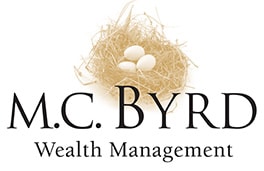Anyone who has driven through our home state knows the phrase “miles and miles of Texas” is an understatement. To travel between our major cities is to spend at least a couple of hours on the road. In fact, the Texas Department of Transportation maintains more than 79,000 miles of roadway, more than any other state, as well as over 26,000,000 square feet of signs.
Just as road signs provide vital information that help us arrive at our destination, banking surveys can provide important clues as to the direction of the economy over the course of the next few months. The banking survey we will look at today is called the Senior Loan Officer Opinion Survey. Produced by the Federal Reserve, it asks bank loan officers questions regarding their lending activity to businesses and consumers. Not surprisingly, when banks begin to tighten their standards, the percentage of loans in default rises over the next year or so.
In the chart above the net percentage of domestic banks tightening standards to businesses is represented by the blue line. The charge-off rate, or percentage of commercial loans in default, is represented by the red line. Over the past 20 years or so when banks have tightened their lending standards the percentage of commercial loans in default tends to rise proportionally four quarters later. Given the date at which this number peaked, it looks as though it is probable that the charge-off rate will rise significantly over the first half of 2021, mimicking financial conditions last seen in the depths of the financial crisis.
We find a similar relationship between the percentage of banks tightening standards on consumer loans and credit cards and the charge-off rate over the next year. Provided this relationship holds, it is likely to serve as a headwind to consumer spending.
Banks are currently flying blind as to the true state of their loan books due to CARES Act provisions which mandated payment holidays for borrowers, many of whom signed up as a precaution, making estimates of potential losses difficult. In Europe, where similar programs were implemented, the chairman of the supervisory board of the European Central Bank believes they may see a higher number of non performing loans than during the financial crisis or the sovereign debt crisis. Government programs on both continents have had the effect of shielding the true scale of loss.
Similar trends can be perceived in publicly traded debt. The Treasury Department announced last week it would be terminating the Federal Reserve’s access to funds intended to preserve liquidity in the corporate bond market by the end of the year, prompting concern among market participants who viewed this program as an essential element in the recovery in financial markets we have experienced since March 23rd. Such a program could lead to increased illiquidity and pour gasoline on the fire of increasing defaults. S&P Global Ratings has issued a base forecast of a trailing 12 month 12.5% default rate for speculative grade debt by June 2021, implying that the first half of the year will look fairly similar to conditions seen during the credit crisis.
While every crisis is different, it should be noted that in previous instances each of the conditions noted above preceded pronounced stock market selloffs. These metrics not only give us an idea of where we are, but where we may be going and the risks and opportunities that lie ahead.
From the outset of this crisis we have noted there were two elements influencing the economic data: reduced expenditure due to COVID-19 and the related but separate default cycle that would inevitably accompany it. While the release of several viable vaccine candidates gives us reason to believe that we will see substantial improvement in the first element, the data above seems to indicate the economic consequences are still around the corner. With markets at record-breaking levels of expensiveness, we can confidently state that the risks for investors going into the new year are significantly biased towards the downside.

